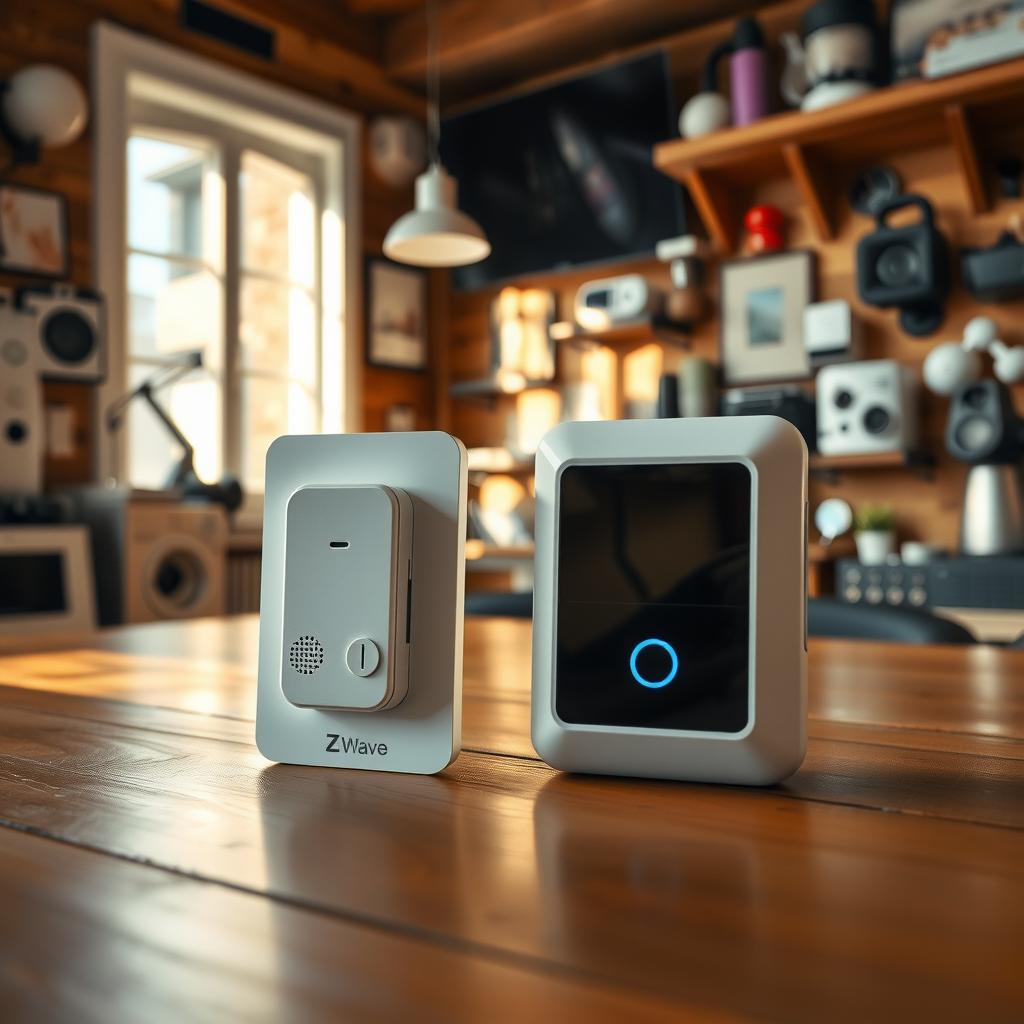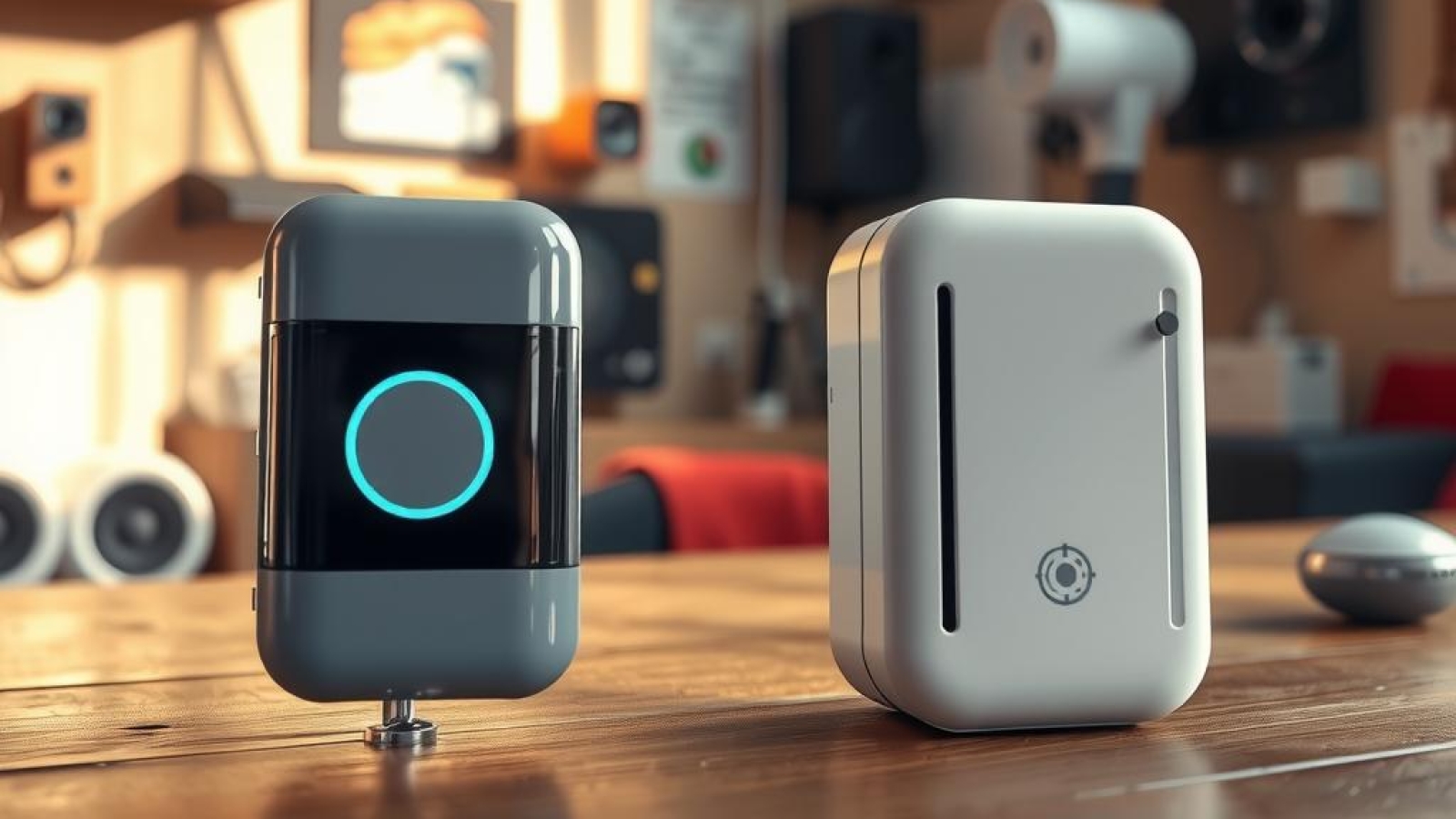In an age where home security is paramount, the choice of door sensors can significantly influence the safety and comfort of a household. Among the myriad options available in today’s smart home market, Z-wave and Zigbee stand out as two leading wireless technologies that promise enhanced performance and reliability. However, with both options boasting unique advantages and some limitations, how does one determine which system offers superior reliability for door sensors? This comparison delves into the intricacies of these two technologies to illuminate their strengths in real-world application.
For homeowners seeking to bolster their security systems through effective sensor performance, understanding the nuances between Z-wave and Zigbee is essential. Each technology operates on distinct principles that impact factors such as range, battery life, network stability, and overall resilience against interference—all critical elements when considering door sensors for a smart home setup. As we explore these differences further, readers will find themselves better equipped to assess which option aligns best with their specific needs.
Moreover, this blog post aims not just to compare features but also to provide insights into scenarios where either technology might excel or falter. By examining user experiences alongside technical specifications—such as how well each protocol handles multiple devices in close proximity—we can gain valuable perspectives on their long-term reliability.
With increasing reliance on interconnected devices within our homes it becomes crucial for users to select solutions that offer consistent performance over time. Therefore, this discussion promises not only clarity about Z-wave vs Zigbee door sensors reliability, but also guidance towards making informed decisions rooted in empirical evidence rather than marketing claims. Prepare to embark on a detailed exploration that could very well shape your approach toward securing your living space more effectively!

Key Points:
- Protocol Performance: Understanding the differences in signal strength and range between Z-wave and Zigbee door sensors.
The performance of wireless protocols like Z-wave and Zigbee significantly impacts the effectiveness of door sensors within smart homes. Both technologies provide robust solutions for security systems, yet they differ in their ability to maintain a strong connection over varying distances. For instance, while Z-wave can typically cover larger areas due to its longer range, Zigbee, with its mesh network capability, excels in densely populated environments where multiple devices are interconnected. Homeowners must consider these factors when evaluating sensor performance.
- Battery Life Considerations: Examining how battery efficiency varies between Z-Wave and Zigbee systems.
Another critical aspect influencing reliability is battery life. Generally speaking, devices using the Z-wave protocol tend to consume less power due to their low-frequency operation, resulting in longer-lasting batteries for door sensors. In contrast, although some might argue that Zigbee offers a more frequent communication cycle which can lead to quicker notifications about unauthorized access, this may come at the expense of reduced battery longevity. Therefore, assessing how each system manages energy consumption is vital for homeowners focused on maintaining effective security without frequent replacements or charges.
- Interference Resistance & Network Stability: Analyzing susceptibility to interference from other devices within the home environment.
Interference from other wireless signals presents another crucial consideration when comparing door sensors. The frequency bands used by both technologies play a significant role here; while Zigbee operates on 2.4 GHz—which is common among many household devices—this makes it more susceptible to interference than Z-wave, which typically uses lower frequencies (around 908 MHz or 868 MHz). This difference can affect network stability; thus understanding how each protocol reacts under adverse conditions helps users make informed decisions regarding which door sensor will best secure their home against potential intrusions or false alarms caused by signal disruptions.

Introduction: Understanding the Importance of Door Sensors
The Backbone of Smart Home Security Systems
The advent of smart home technology has revolutionized how homeowners approach security, with door sensors emerging as vital components in this modern landscape. These devices not only enhance the reliability of security systems but also provide users with real-time notifications about their home’s status. When paired with wireless technologies such as Z-wave and Zigbee, door sensors offer unparalleled performance and network stability. These protocols facilitate seamless communication between various smart devices, ensuring that whether a door is opened or closed, homeowners are promptly informed, thereby significantly minimizing potential security threats. As part of a broader suite of smart home solutions, door sensors contribute to an integrated ecosystem where every component works harmoniously to protect residents.
Enhancing Home Automation Efficiency
Incorporating door sensors into a smart home setup allows for advanced automation capabilities that extend beyond mere alerts. For instance, when using Z-wave or Zigbee, these sensors can trigger other connected devices; opening a front door could activate interior lights or adjust thermostat settings based on user preferences. This synergy between devices enhances both convenience and energy efficiency while maintaining high levels of security. Furthermore, the use of reliable sensor performance ensures that these devices function optimally over time without frequent maintenance interruptions—an essential factor for busy households looking to streamline daily routines without sacrificing safety.
Establishing Trust through Reliability
The effectiveness of any security system hinges on its reliability; thus, choosing the right technology is crucial for peace of mind. Both Z-wave and Zigbee have established themselves as leaders in wireless communication protocols specifically designed for low-power applications like door sensors. Their ability to form mesh networks means that even if one device goes offline, others can still communicate effectively within the system—reinforcing overall network stability and performance continuity across all connected gadgets in a smart home environment. Consequently, investing in high-quality door sensors equipped with these technologies not only fortifies physical barriers but also fosters trust among users who depend on their systems daily to safeguard what matters most—their homes and families.
Z-Wave vs Zigbee: Understanding Their Unique Characteristics
Delving into the Core Differences of Wireless Technologies
In the ever-evolving landscape of smart home technology, Z-Wave and Zigbee stand out as two leading wireless communication protocols designed for low-power devices. Both facilitate seamless connections between various components in security systems, with door sensors being a crucial element for ensuring home safety. One of the distinctive characteristics that set these technologies apart is their operational frequencies. While Z-Wave utilizes a sub-1 GHz frequency band (specifically around 908 MHz in North America), Zigbee operates at 2.4 GHz globally. This difference affects their respective range and penetration capabilities; Z-Wave’s lower frequency allows it to traverse walls more effectively, providing a superior reach in larger homes or buildings compared to Zigbee, which may encounter interference from Wi-Fi networks operating on similar frequencies.
Furthermore, when examining performance metrics such as network capacity and scalability, both protocols present unique advantages tailored to specific use cases in smart home settings. For instance, one can connect up to 232 devices within a single Z-Wave network while maintaining robust performance across all connected devices due to its mesh networking design—a feature that enhances reliability by allowing data packets to hop between nodes rather than relying solely on a central hub. In contrast, Zigbee’s architecture supports thousands of nodes within its mesh networks, making it ideal for extensive IoT applications where numerous sensors are required—an excellent fit for large-scale deployments like commercial facilities or sprawling residential complexes.
Performance Metrics: Evaluating Reliability Factors
The Importance of Stability and Security in Smart Home Deployments
When assessing the reliability factors associated with both technologies, it’s essential to consider how each protocol manages data transmission under varying conditions within smart homes equipped with door sensors. With respect to latency and responsiveness—critical elements for real-time applications like security alerts—both protocols demonstrate commendable efficiency; however, they do so through different methodologies rooted in their design principles. For example, while both utilize low power consumption strategies conducive to prolonged battery life—which is particularly advantageous for door sensors—the inherent structure of a Z-wave network tends towards greater stability during heavy traffic periods due mainly to its limited number of device connections per network.
Moreover, security remains paramount when discussing any wireless technology used within security systems; here again lies an area where both Z-wave and zigbee excel but differ significantly regarding implementation specifics. The AES-128 encryption standard employed by both ensures secure communications over the airwaves; however—crucially—it’s worth noting that zigbee, owing primarily to its broader adoption across diverse manufacturers often leads users into scenarios where potential vulnerabilities might arise from less stringent implementations across multi-vendor ecosystems compared against highly controlled environments typical among dedicated z-wave products designed predominantly by certified partners adhering closely established guidelines.
Conclusion: Choosing Between Z-Wave and Zigbee
Decision-Making Factors Based on User Needs
Ultimately choosing between z-wave versus zigbee hinges upon user requirements surrounding deployment context coupled with desired functionality levels concerning sensor performance related specifically toward securing entry points such as doors throughout residential areas or commercial spaces alike! Those seeking straightforward installations offering reliable connectivity may gravitate towards installing specialized equipment utilizing either option based largely upon existing infrastructure already present within households while simultaneously considering future expansion plans needing flexibility accommodating varied sensor types beyond just those installed initially without compromising overall system integrity down line yielding substantial long-term benefits ultimately derived from informed selections made today!
Key Considerations in Smart Home Technology Selection
Understanding the Essentials of Z-Wave and Zigbee
When delving into the world of smart home technology, particularly when choosing between Z-Wave and Zigbee, several critical factors must be weighed to ensure an informed decision. One fundamental aspect is range; Z-Wave typically boasts a longer operational range, often extending up to 100 meters indoors compared to Zigbee’s approximately 10-20 meters. This extended reach can be particularly beneficial in larger homes where maintaining connectivity across various devices like door sensors becomes crucial. However, it’s important to recognize that both technologies utilize mesh networking capabilities, allowing devices within their respective networks to relay signals and extend coverage effectively.
Another vital consideration is battery life. Devices utilizing Z-Wave generally exhibit superior battery longevity due to their lower power consumption profile during idle periods. This characteristic makes them ideal for remote installations such as outdoor sensors or security systems that may not have easy access to power sources. In contrast, while many Zigbee devices are also energy-efficient, they might require more frequent recharging or battery replacement depending on usage patterns and network conditions.
Interference susceptibility is another key factor influencing choice between these two wireless technologies. Operating primarily at different frequencies—Z-Wave’s sub-GHz frequency tends to experience less interference from common household gadgets than the 2.4 GHz bands used by most Zigbee devices. As a result, users seeking reliable network stability for mission-critical applications like alarm systems may find greater assurance with Z-Wave.
Integration ease offers yet another layer of complexity in selection processes involving these protocols; compatibility with existing smart home ecosystems can determine user satisfaction significantly over time. While both protocols have seen increasing support among manufacturers, it’s worth noting that certain platforms lean towards one technology over the other—making comprehensive research essential before committing resources into either system.
In conclusion, making an informed choice between Z-wave and zigbee relates closely back through considerations surrounding range limitations versus reliability metrics alongside efficiency standards within specific application contexts—particularly those involving sensor performance associated with security systems throughout modern smart homes today.
Frequently Asked Questions:
Q: What are the main differences in range between Z-wave and Zigbee door sensors?
A: The primary distinction lies in their operational ranges. Z-wave typically operates within a longer range, reaching up to 100 meters indoors, while Zigbee generally has a shorter effective distance of about 10-30 meters. This difference can significantly influence reliability when installing door sensors far from the central hub.
Q: How does battery life compare for door sensors using Z-wave versus those using Zigbee?
A: Battery life is an essential consideration for homeowners. Generally, devices utilizing Z-wave tend to have slightly better battery longevity due to lower power consumption during idle states compared to their Zigbee counterparts. However, specific performance can vary based on individual device designs.
Q: Which technology is more resistant to interference in smart home setups—Z-wave or Zigbee?
A: In terms of interference susceptibility, both protocols exhibit strengths; however, they differ based on network configuration. While both technologies operate on different frequencies (with Z-wave often less congested), user experiences may vary depending on local conditions such as Wi-Fi networks or other electronic devices that could impact signal stability and overall sensor performance.

Add a Comment